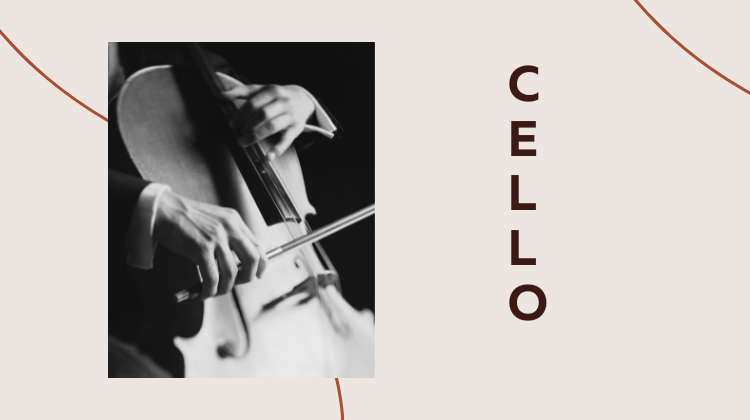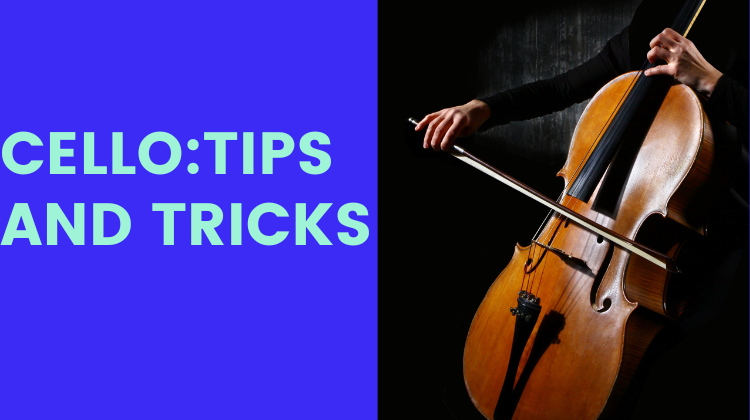The cello is a fascinating musical instrument that has captivated music lovers for centuries. This string instrument, with its warm and rich sound, has been used in various music genres, from classical to contemporary, making it a versatile instrument. If you are a cello player or a music enthusiast, you may be curious about the lifespan of this beautiful instrument. How long does a cello last? This is a common question that many people ask. While there is no straightforward answer, several factors can affect the longevity of a cello, such as the quality of the instrument, how often it is played, and how well it is maintained.
In this blog post, we will explore these factors and provide insight into how long you can expect your cello to last.
How Long Does Cello Instrument Last

Introduction
The cello is a beautiful and complex musical instrument that has been enjoyed by musicians for centuries. It is a stringed instrument that produces a warm and rich tone that is essential in classical music but is also used in many other genres such as folk, rock, and pop music. One of the questions that often arises among cello enthusiasts and beginners is how long a cello can last. The lifespan of a cello can be affected by various factors, including the quality of the instrument, care, and maintenance, and environmental factors such as humidity and temperature. In this article, we will explore these factors in detail and provide tips and tricks for prolonging the lifespan of your cello, as well as when to consider repair or replacement. Whether you are a professional musician or a beginner, understanding the factors that affect the longevity of your cello can help you make informed decisions and enjoy the beautiful sound of your instrument for years to come.
Factors Affecting the Longevity of a Cello
The cello is a musical instrument that requires dedication, time, and effort to master. Whether you are a professional cellist or an amateur player, you may be wondering how long your cello will last. While the lifespan of a cello can vary, several factors can affect its longevity. Here are some of the most important factors to consider:
Quality of the Instrument
The quality of the cello can have a significant impact on its lifespan. High-quality cellos made from premium woods and crafted with expert workmanship can last for many decades if not a lifetime. On the other hand, lower-quality cellos may not last as long and may require more frequent repairs and maintenance.
Frequency of Use
How often a cello is played can also affect its lifespan. Regular use can cause wear and tear on the instrument, leading to the need for repairs and maintenance. In contrast, a cello that is seldom played may not suffer as much wear and tear and may last longer.
Maintenance and Care
Proper maintenance and care are essential for prolonging the life of a cello. This includes regular cleaning and conditioning of the instrument, as well as storing it in a cool, dry place away from extreme temperature and humidity changes. Using a humidifier during dry winter months can also prevent the wood from cracking and warping.
Climate and Environmental Conditions
The climate and environmental conditions in which the cello is stored and played can also affect its longevity. Exposure to excessive humidity, heat, or cold can damage the instrument, leading to cracks, warping, or other damage.
In short, several factors can affect the lifespan of a cello, including the quality of the instrument, frequency of use, maintenance and care, and climate and environmental conditions. By taking proper care of your cello and ensuring that it is stored and played in optimal conditions, you can help ensure that it lasts for many years to come.
Care and Maintenance
The cello is a musical instrument that requires proper care and maintenance to ensure its longevity. With regular care, a cello can last for many decades or even a lifetime. Here are some essential care and maintenance tips to help you keep your cello in good condition:
Cleaning and Conditioning
Regular cleaning and conditioning of your cello are essential for keeping it in good condition. Use a soft, dry cloth to wipe down the instrument after each use to remove dirt, dust, and oils from your skin. Avoid using water or harsh chemicals, as these can damage the wood.
Periodically, you may also want to condition the wood with high-quality oil, such as linseed oil. This will help keep the wood from drying out and cracking. However, be careful not to over-oil the instrument, as this can cause it to become sticky and attract more dirt.
Bridge and String Care
The bridge and strings are essential components of the cello, and proper care can help prolong their lifespan. Check the bridge periodically to ensure that it is standing upright and not leaning forward or backward. If the bridge is not in the correct position, adjust it carefully, or seek the help of a professional luthier.
You should also regularly check the strings for signs of wear and tear. Replace the strings as needed, and consider changing them every six months to a year, depending on how frequently you play.
Humidity Control
Humidity control is essential for maintaining the health of your cello. Wood can expand and contract with changes in temperature and humidity, which can cause cracks and warping. Use a hygrometer to measure the humidity levels in the room where you store your cello, and aim for a relative humidity of between 40% and 60%.
If the humidity levels are too low, consider using a humidifier to add moisture to the air. If they are too high, use a dehumidifier to remove excess moisture.
Proper Storage
Proper storage is critical for protecting your cello from damage. Store the instrument in a sturdy case that is designed to protect it from bumps and jostles. Avoid storing the cello in direct sunlight, near heaters, or in damp or humid areas. Also, never store the cello vertically or lean against a wall, as this can cause damage to the instrument.
Professional Maintenance
Finally, consider taking your cello to a professional luthier for periodic maintenance and repairs. A professional can identify any issues that may be affecting the instrument’s sound and recommend the necessary repairs or adjustments. Regular maintenance can help keep your cello in top condition and ensure that it lasts for many years to come.
In short, caring for and maintaining your cello is essential for ensuring its longevity. Regular cleaning and conditioning, bridge and string care, humidity control, proper storage, and professional maintenance are all critical components of proper cello care. By following these tips, you can help keep your cello in top condition and enjoy its beautiful sound for many years to come.
when to repair or replace
Even with proper care and maintenance, a cello may eventually require repair or replacement. Here are some signs that it may be time to repair or replace your cello:
Visible Damage
Visible damage, such as cracks, dents, or scratches, may affect the sound and playability of the cello. While minor damage can often be repaired, extensive damage may require replacement.
Intonation Issues
If your cello has intonation issues, such as notes that are out of tune or a buzzing sound, it may be time for repair or replacement. These issues can often be caused by problems with the bridge or soundpost, and a professional luthier can diagnose and repair the issue.
Warping or Twisting
Warping or twisting of the cello can affect its sound and playability. This may be caused by changes in humidity or exposure to extreme temperatures. While minor warping or twisting can often be repaired, extensive damage may require replacement.
Age
Age can also be a factor in determining whether to repair or replace a cello. While high-quality cellos can last for many decades or even centuries, lower-quality instruments may not last as long. If your cello is very old and showing signs of wear and tear, it may be time for a replacement.
Cost of Repairs
Finally, consider the cost of repairs versus the cost of replacement. Minor repairs, such as restringing or bridge adjustments, are typically less expensive than major repairs or replacements. If the cost of repairs is high, it may be more cost-effective to replace the cello instead.
In short, there are several factors to consider when deciding whether to repair or replace a cello. Visible damage, intonation issues, warping or twisting, age, and cost of repairs are all factors to consider. By working with a professional luthier, you can determine the best course of action for keeping your cello in top condition and enjoying its beautiful sound for many years to come.

Tips and Tricks
Here are some tips and tricks for prolonging the lifespan of your cello:
- Keep the cello in a sturdy case when not in use to protect it from damage.
- Clean and condition the wood regularly to prevent drying out and cracking.
- Check the bridge and strings periodically and replace them as needed.
- Control the humidity levels in the room where the cello is stored to prevent warping and cracking.
- Avoid exposing the cello to direct sunlight, heat sources, or damp areas.
- Do not store the cello vertically or lean against a wall.
- Use high-quality strings and accessories to enhance the sound and longevity of the instrument.
- Avoid using harsh chemicals or water when cleaning the cello, as this can damage the wood.
- Consider taking the cello to a professional luthier for regular maintenance and repairs.
- Finally, play the cello regularly to keep it in good condition and enjoy its beautiful sound.
FAQ
A: With proper care and maintenance, a high-quality cello can last for several decades or even centuries.
A: It is recommended to have your cello inspected by a professional luthier at least once a year for regular maintenance and repairs.
A: It is not recommended to play your cello in extreme temperatures, as this can cause the warping and cracking of the wood.
Yes, a professional luthier can often restore very old and damaged cellos, but the cost of restoration may be high. It is important to consider the cost versus the value of the instrument before investing in restoration.
Conclusion
In conclusion, the lifespan of a cello can vary depending on several factors, including the quality of the instrument, care, and maintenance, and exposure to environmental factors. With proper care and regular maintenance by a professional luthier, a high-quality cello can last for several decades or even centuries. However, even with the best care, a cello may eventually require repair or replacement due to visible damage, intonation issues, warping or twisting, age, or the cost of repairs versus replacement. By following the tips and tricks for prolonging the lifespan of your cello and seeking professional maintenance and repairs as needed, you can enjoy the beautiful sound of your cello for many years to come.
ALSO READ:

StringBudget is a team of music enthusiasts who started playing with strings and decided to help beginners to master their music skills. Our goal is to provide tips and guides for beginners who are willing to improve their music skills.
We focus on string instruments like guitar, violin, ukulele, and many more. Learning and mastering an instrument is a quite tedious task and our team is working harder to provide the best solutions for beginners to gain confidence over string instruments.

